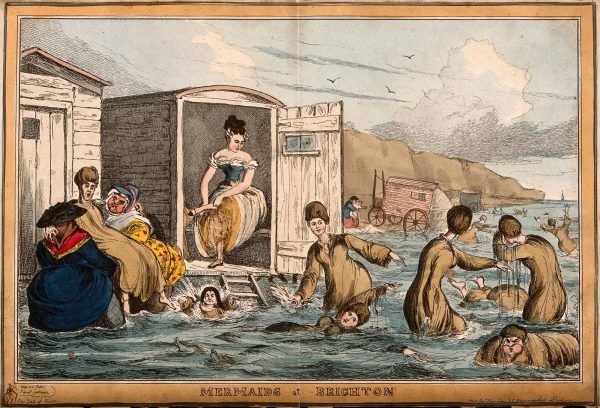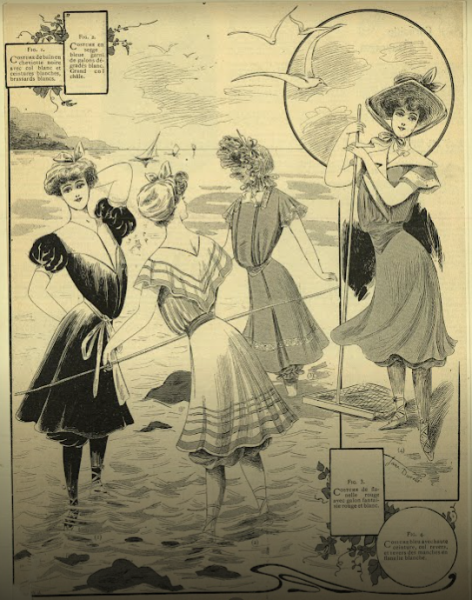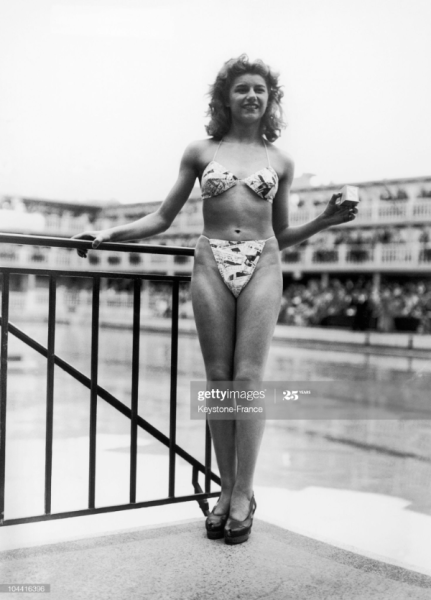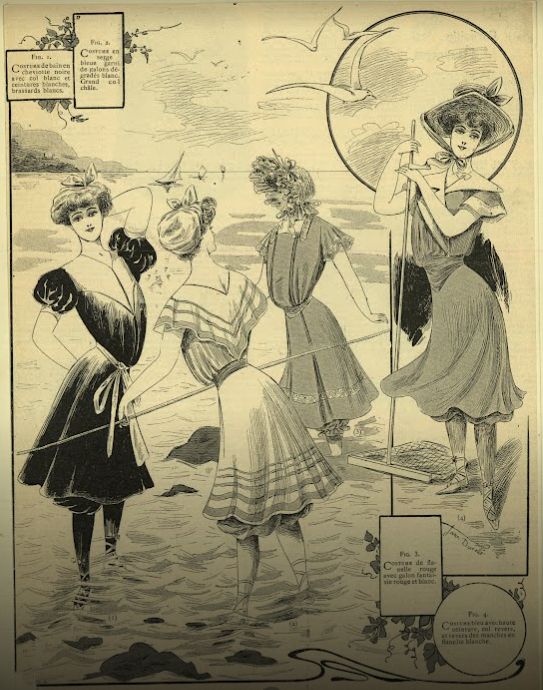Though it can be an irritating stereotype, young people often look forward to summer break as if it will be their last. It just so happens that one of the most popular summer prep activities for girls is- bikini shopping? Swimming became fashionable in society as a leisure activity sometime in the 18th century, meaning that preserving women’s ‘modesty’ was at the forefront of fashion. In our current day and age, however, we have no such qualms. Thus, the journey through one of the ever-changing garments of females that have reflected their values and their wars, from the 4th century to the 21st, from the Roman Empire to the modern world, from bathing gowns to micro-bikinis.
The first bikini or swimsuit-like article of clothing was displayed in the 4th century during the Roman Empire. Though the actual use is fairly obscure, these garments are widely thought to have been worn by Roman women when they played sports like gymnastics, ball games, and swimming.

During this time, swimming and bathing were originally done in the nude and were separated by gender. The bandeau-style top and boy-shorts bottoms were more often utilized for other activities (other than recreational swimming).
After the Roman Empire, however, the fashion and practice of women’s sports, as well as sports in a semblance, fell out of favor. Despite this, in the mid-1800s (around 1825 to be exact) swimming started to be popularized as a competitive sport. Thanks to the movement, swimming was popularized as a recreational activity. Enter, the bathing gown.
In the 1800s, ‘modesty’ was a virtue that men idolized and women adhered to. So, when it came to bathing costumes, it would be no different. They were long, woolen, and had a ballooning, awkward shape to not stick to the skin (as much) when wet. Frankly, they don’t sound, or look, fun to wear. Not only this but to continue their goal of modesty, they used bathing carriages to redress into their bathing suits before and after the fact. Which does sound like fun.
Unfortunately, there were also ‘beach monitors’ who walked around with rulers to make sure a woman’s bathing skirt was ‘of a modest length’.

(Photo Courtesy of the Wellcome Collection)
In the 1900s however, the swimsuit evolved into more of a tea-length, layered affair worn with tights so you could see one’s leg, and was notably more fitted. It was once again made of wool, probably not the most convenient or comfortable. Still, it did fit the needs of the primarily European consumers wearing them in frigid water (they were more often than not designed in Europe).

(Photo courtesy of LIFE Photo Collection)
Now, a jump to the 1940s, where we finally see the fashion we now think of when the phrase ‘swimsuit’ is uttered. Courtesy of the name of several atolls that the U.S. used as nuclear sites, and a fashion designer named Louis Réard, beachgoers everywhere were introduced to the bikini. Since the Bikini Atolls served as nuclear test sites, this designer was inspired to name his latest and most daring design after them, as the response was sure to be nuclear. It most certainly was.

After the bombshell of the bikini’s initial debut into society, its concept didn’t explode until the 60s, when several actresses were photographed at beaches wearing the scandalous article. From then on, the apparent endorsement of the fashion allowed people of many backgrounds to adopt the fashion into their lives.
Since then, there have been many variations and personal takes on the fashion of the ever-changing swimsuit. Although the swimsuit has changed as our world does for a very long time like all fashion, in the end, it’s up to the individual whether to wear a bikini or not.






























